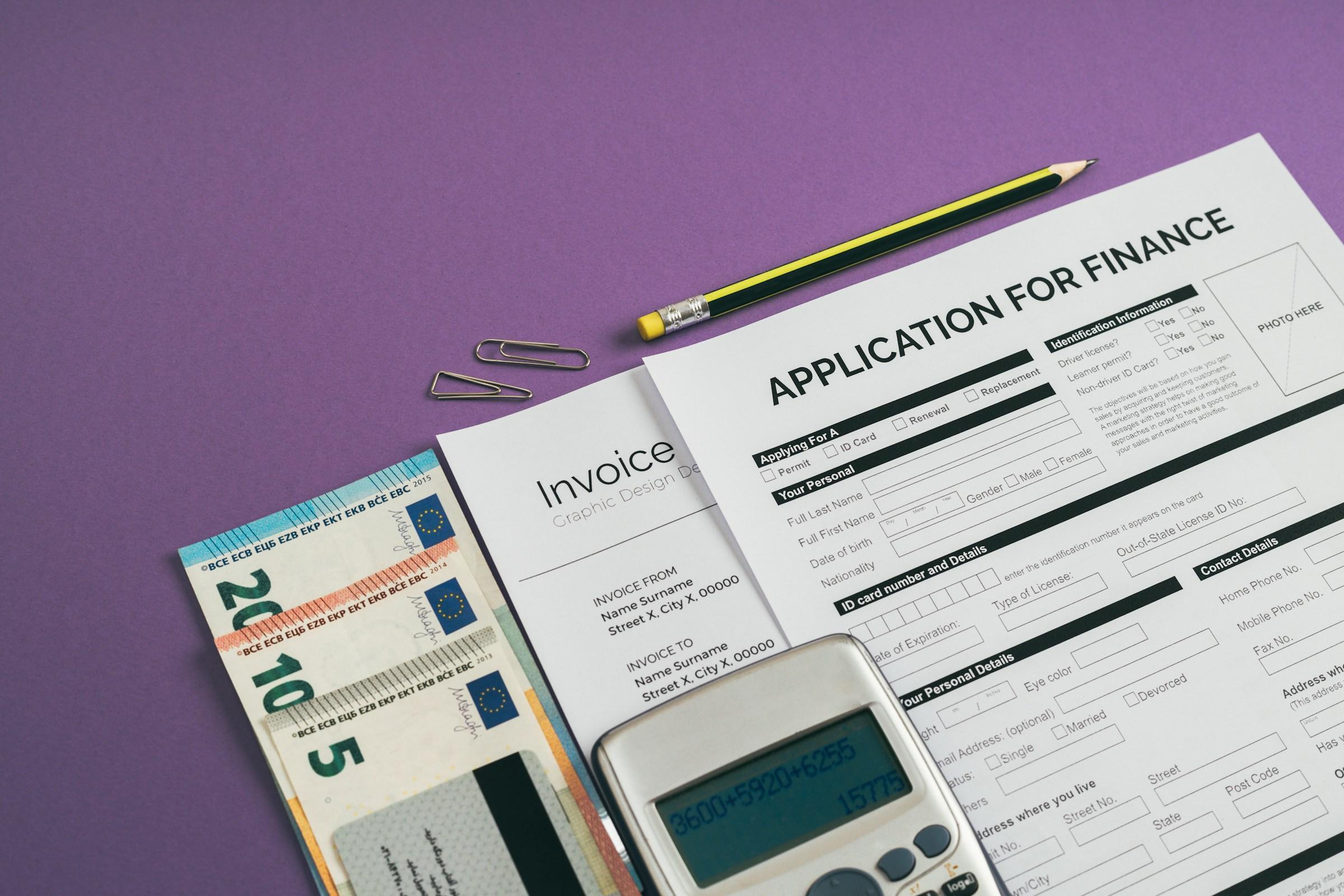Installment loans have become part of the background noise of everyday spending. They are everywhere you look. Your shopping app offers to split your cart into three easy payments. Your bank suggests converting your last big purchase into fixed monthly instalments. The telco store quotes the price of a new phone as a small monthly figure rather than its full cost. On the screen, the numbers look harmless. You are not paying 900 today, you are paying 75 a month, and that feels softer and more manageable. This is exactly how these products are designed to feel. The psychology focuses your attention on the monthly amount instead of the total cost or the long term impact on your cash flow. So the real question is not whether you can afford 75 this month. The better question is what you should consider before signing up for any installment loan, so that a small looking monthly payment does not quietly tighten your budget over the next year or longer.
The starting point is to understand what sort of installment product you are actually dealing with. Not all installment loans behave in the same way, and the label on the screen does not always match the underlying structure. Traditional personal loans are straightforward. You borrow a fixed sum from a bank or finance company, pay interest each month, and clear the balance over a specific period, often from six months to five years. These loans usually show up clearly on your credit report, and future lenders will see how much you borrowed, how long you took to repay, and whether you paid on time. Then there are card or bank conversion plans, where your credit card issuer offers to convert an existing purchase into fixed monthly payments. These plans are often advertised as zero interest, but there may be a one time processing fee added at the start. That fee is really a form of interest that has been packaged differently. For short tenors, like three or six months, the effective annual cost can be surprisingly high once you convert that fee into a percentage.
On top of that, there are buy now pay later services built into shopping apps or offered by fintech brands. The marketing may avoid using the word "loan", but splitting a purchase into multiple payments, with penalties if you miss one, is still a kind of borrowing. In some markets, these obligations already appear on your credit file. In others they do not yet, but that may change. Either way, missed payments can lead to fees and collection efforts even if no bank is involved. Knowing which category your installment plan falls into tells you a lot about the rules, your protections, and the long term consequences. A personal loan that sits on your credit report and affects your eligibility for a mortgage comes with a different level of seriousness than a small three payment plan on a shopping app, even if the monthly amount looks similar. Before you agree, pause and identify clearly what type of credit you are accepting.
Once you have done that, it is time to look past the advertised rate and the monthly figure and calculate the real cost. The attractive number on the screen is almost always the monthly payment. The lenders rarely highlight the total repayable amount unless they are forced to. To understand what you are signing up for, you need to add up every payment from the first month to the last. Include any processing or service fees, any upfront charges, and any mandatory insurance that has been rolled into the loan. Compare the final total against the original price of whatever you are buying. The difference between those two amounts is the cost of borrowing for that purchase.
If you see a plan that claims to be zero percent interest but charges a 6 percent processing fee at the beginning, remind yourself that this is not free. You are still paying for the privilege of spreading out your payments. For short term loans, that fee often translates into an effective annual interest rate that is much higher than what you would pay on a well managed credit card balance or a regular personal loan. It is worth comparing the installment plan with other ways of paying for the same item. Would a standard personal loan from your bank be cheaper, even if the headline rate looks higher, because the fees are lower and the terms are clearer. If you were disciplined enough to put the purchase on a normal credit card and clear it over one or two months, could that actually cost less than the installment plan that stretches the payment over six months. Sometimes the plan that feels more controlled is not the one that is cheaper.
If detailed calculations feel tedious, you can still use a simple rule: for a short or medium term loan, if the total repayment is more than 10 to 15 percent above the original price, ask yourself whether that extra cost is truly worth the convenience of paying later. That quick check alone can save you from many overpriced deals. Beyond the raw cost, you also need to think about cash flow. Many people only ask one question before agreeing to an installment: can I afford this monthly payment right now. It is a reasonable instinct, but it is incomplete. A better question is whether your future self can comfortably carry this payment for the entire duration of the plan.
Imagine your budget as a phone battery. Every fixed monthly payment is like another app running in the background. One or two are fine. By the time you have five or six running nonstop, you start to wonder why your battery dies so quickly. It is the same with your monthly income. Look at how much you have left after necessities and your basic savings contributions. Slot in the new installment, then imagine that two surprise expenses show up in the next few months. Rent increases, a medical bill, car repairs, or a family obligation. If that scenario already feels tight in your mind, then the installment may be stretching your budget more than you are comfortable admitting.
This becomes critical if you are stacking multiple loans. A single 75 payment looks tiny on screen. Three or four such plans running at the same time add up to a few hundred leaving your account every month before you even start your normal spending. When pay day arrives and most of it disappears into automatic deductions, the stress can be heavy, and you might start relying on new credit just to survive until the next month. That is how debt spirals begin, even without any one large loan.
You should also understand how this borrowing touches your credit profile. Your credit score is not something you see everyday, but it quietly controls important parts of your financial future, such as your mortgage rate, your ability to get a car loan, or how much of a credit limit banks will offer you. Personal loans usually show up as separate accounts. A track record of on time payments and responsible amounts can help. Late or missed payments hurt significantly, and those marks can stay on your report for years.
Credit card installment conversions shrink your available credit limit while the plan is active, which raises your utilization ratio if you keep spending at your usual level. A higher utilization ratio may pull your score down. Buy now pay later services might not appear on every credit report yet, but late payments can still cause trouble with those providers and may be reported to bureaus in future. The safest approach is to behave as if every installment will eventually be visible to all lenders, and to protect your record accordingly.
Another important layer is the set of rules sitting in the fine print of your agreement. This is the least exciting part, so most people ignore it, but these clauses determine how painful it becomes if anything goes wrong. Look for what happens if you miss a payment. Is there a flat late fee. Do they add penalty interest on top of the normal charges. Will the lender keep trying to deduct from your account repeatedly, risking other payments bouncing or overdraft fees. Check the policy on early settlement. One of the advantages of an installment is that you can, in theory, clear it ahead of schedule if you receive a bonus or earn extra from side hustles. But not every lender allows you to exit cheaply. Some will charge an early termination fee or keep a portion of the future interest as compensation. That can remove the flexibility that made the installment appealing in the first place. It is also worth checking whether the interest rate is fixed or variable. Fixed rates give you certainty about the amount you will pay each month and the total cost of your loan. Variable rates can move with broader market rates, which might push your payment higher over time, especially on longer term loans. If your budget is tight, that variability may not be a risk you want to carry.
Alongside the numbers and rules, it helps to understand who exactly is lending to you and how they earn money from the relationship. Traditional banks and licensed finance companies usually make money from interest and some fees, but they also care about regulation and longer term customer relationships. Fintech apps and buy now pay later platforms may be focused more on rapid user growth, transaction volume, and sometimes late fees as a meaningful revenue source. Retailers that offer "interest free" plans may be absorbing some of the cost themselves in order to move stock quickly, but they will usually set prices and terms to protect their margins.
If a lender seems to rely heavily on penalties or nudges you constantly to borrow more, that is a sign to be cautious. A product that only works well for you if you never slip is a product that mainly benefits the provider when you are under financial stress. All of this still leaves one more question that often matters more than the math. What is the real purpose of this purchase, and is borrowing the right way to support it. There is a big difference between using an installment loan to solve an essential problem and using it to keep up with lifestyle pressure or social comparison. Replacing a broken laptop that you need to earn a living can be a reasonable reason to use an installment, especially if you have a clear plan for repayment and limited emergency savings. Upgrading to a slightly nicer phone or buying another pair of branded sneakers because your friends have them sits in a different category.
A simple test can help here. If you already had the full amount in cash, and there were no installment options at all, would you still proceed with the same purchase today. If the honest answer is no, then the installment is doing emotional work, not just financial work. It is allowing you to say yes to something your rational side might reject if you had to feel the full cost at once. When you are seconds away from agreeing to a plan on your phone or signing a form at the counter, you can run through three quick questions in your head. If your income fell by 20 percent for the next three months, could you still keep up with this payment without borrowing again. After adding this plan, how many separate loans or installments will you be paying next month, and does that number make you feel calm or uneasy. If all installment and credit options disappeared tomorrow, would you still think this purchase is worth paying full price for in cash. Honest answers to those three questions will often tell you whether to proceed or walk away.
In the end, installment loans are not automatically harmful. They can be useful tools to spread out big expenses over time so that you do not drain your savings all at once. The problem begins when they stop being occasional tools and turn into your default way of paying for ordinary things. When that happens, your future income is already committed before it arrives, your flexibility shrinks, and opportunities that require spare cash become much harder to grab. Thinking carefully about what to consider before signing up for an installment loan is really about protecting that future flexibility. It means looking past the small monthly figure, calculating the total cost, stress testing your cash flow, understanding the impact on your credit profile, and being honest about the motivations behind the purchase. This is not formal financial advice, but it is a practical way to make sure that when you do choose to use installments, they support your life instead of quietly controlling it.










-1.jpg&w=3840&q=75)



.jpg&w=3840&q=75)